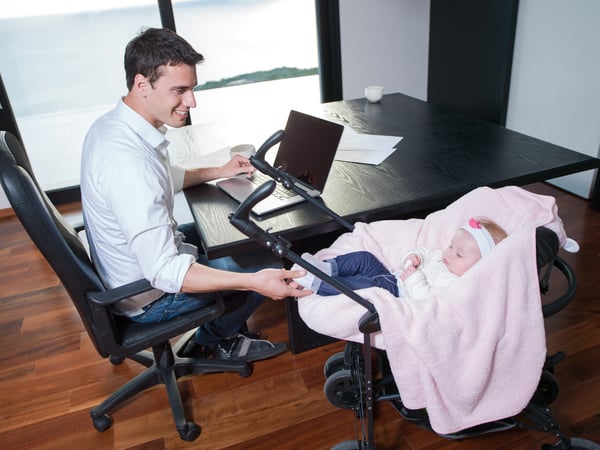Overcoming Barriers to Ability in Remote Work Environments

4 Mins
Updated: August 8, 2024
Published: April 15, 2020

During the COVID-19 pandemic, social distancing and stay-at-home orders amplified the Knowledge-to-Ability gap in organizations everywhere. That’s because knowing how to do something doesn’t automatically mean people will have the ability to do it when they need to. It’s a basic premise of the ADKAR Model. When organizations closed their offices and moved employees to remote working environments, issues with technology, childcare, and other unforeseen barriers to Ability emerged.
- Crowdsourced Insights From the Pandemic
I asked change management practitioners on social media to share the barriers to Ability they’re seeing, along with their suggestions for overcoming them. They offered many useful insights. Interestingly, three primary themes emerged: the effects of isolation and increased stress, childcare issues, and challenges related to technology and remote work.
Addressing isolation and stress
- Take small breaks. Anxiety levels are high with concerns about social distancing and COVID-19, the economy, job insecurity, availability of food and supplies, and more, in addition to managing workloads and continually shifting business priorities. Building in small breaks throughout the day helps people decompress, get outside for fresh air and a little exercise, check in on family, and just be human.
- Check in. Being isolated with your family is difficult enough but some are truly alone, day in and day out. This can cause serious mental health issues. Using humor and positivity helps, but it’s not a long-term solution. To combat loneliness, people are committing to daily check-ins, such as a morning café when teams meet daily to talk about topics unrelated to work, just as you would around the coffee machine. This helps team members vent frustrations and fears you may not know about.
- Leverage tools at your disposal. You probably already have meeting applications that can help you connect virtually. Holding town hall Q&A sessions, posting fun memes, hosting snack-and-learns, and participating in running competitions and other challenges can bring people together. At Prosci, isolated employees are reconnecting and recharging with online lunch connects, one-on-one virtual coffee breaks, and virtual group activities like intention-setting and trivia. Maintaining social connections is essential to staying resilient during turbulent times.
- See and be seen. During online meetings, many people prefer not to turn on their cameras, which makes meetings more impersonal. Turning on the cameras and making a conscious effort to connect with the human beings on the other side of the lens can go a long way right now.
- Consider special needs. Particularly in healthcare settings, where elderly or demented patients are in isolation, family members are attempting to bridge distances with speaker phones and video technology. During one call on a speaker phone, a social worker reported that the patient was completely confused and unaware of where the voice was coming from. Because patients are accustomed to speaking into a phone, sticking with traditional telephone calls and letters may be less stressful in these situations.

Working with a lack of childcare
- Understand disruptions. Balancing professional and family obligations is top of mind for many people working from home during the pandemic. Be supportive and accepting of life happening all around teammates—and with no apologies required. It’s important to understand that every at-home working environment is unique, and many are making do with less-than-ideal situations.
- Share helpful resources. Sharing ideas and resources with teammates can help them keep their children engaged and entertained. Share on Teams, Slack, Yammer, email—any channel that works for you.
- Be generous with grace. Work at being intentionally kind with others and especially with yourself. No one is perfect. We all need more grace in our lives right now.

Navigating technology issues
- Recognize gaps. Nowhere is the Knowledge-to-Ability gap more obvious right now than in the use of technology. Some users, especially older adults who built their careers before computers came along, tended to rely heavily on others to set up and troubleshoot their online collaboration in the past. This is revealing Ability gaps now that support is remote and not as readily accessible.
- Enable needed skills. Even when the remote technology has been in place for some time, some organizations are realizing they should have applied better change management practices when they implemented the project. If an organization provides a “self-explanatory” tool and lets people figure it out for themselves, a significant number of people may not be able to use all the tool’s features when it is needed most. And when using the most basic functions, such as chat and slide-sharing, users may be less interactive during remote meetings because they’re less comfortable with the technology and interactive approaches.
To address these issues, organizations should offer ways to increase Ability, such as simple how-to sessions that you record for easy, ongoing access. If possible, department heads and leaders should model the behaviors in videos to ensure that everyone understands the importance and can use the tools effectively.
- Mitigate information loss. Video and teleconferencing technologies, especially VOIP, have inconsistent quality of audio and connectivity. Lack of internet bandwidth reduces the quality of sound and video, leading to more interruptions. People who are new to conference calls and virtual meetings are often dismayed that they are not able to hear or understand each other. They don't know if they are the problem or if the problem is with their headsets, WiFi, or the meeting technology itself.
The critical issue is really the individual’s Ability to overcome the loss of information shared during meetings and calls. To address this, it’s important to practice noting time lags before speaking, confirming what you heard, and asking individuals to repeat themselves. You can also send real-time confirmation notes in chat windows during the conference or afterwards by email. These are always good practices to improve Ability when working remotely.
- Facilitate effectively. Some people are also reporting a lack of video conferencing attention span. Traditional meeting lengths don’t seem to apply for remote meetings. Keeping meetings short and to the point helps. In cases where one person drowns out the others, collaboration tends to decrease because people stop trying to interject. And in some organizations, there may be less humor and small talk online than in face-to-face meetings, which makes meetings awkward. Addressing these issues requires a well-planned agenda with clear expectations, along with facilitation from the meeting organizer, who should also try to set the desired tone.
The Pandemic's Silver Lining
Adopting the change to work remotely will be easy for some and very challenging for others. One good outcome may be that organizations will realize that change practitioners do not need to travel long distances to be on site all the time. Although technology may never replace in-person contact for all aspects of change projects, overcoming barriers and demonstrating the Ability to effectively manage change remotely could enable more flex opportunities for practitioners when the pandemic is over.


